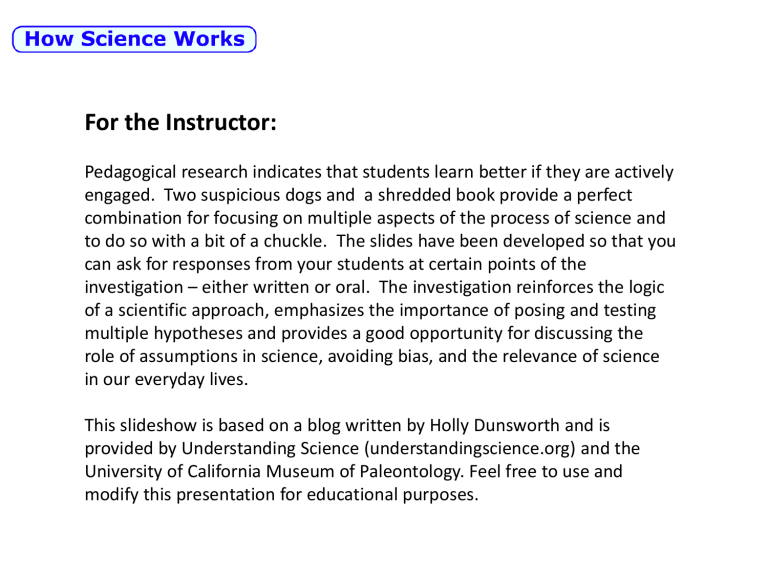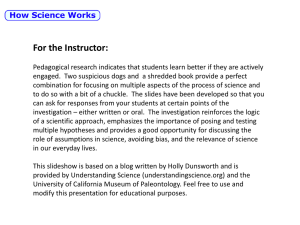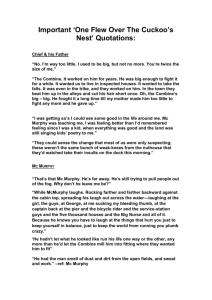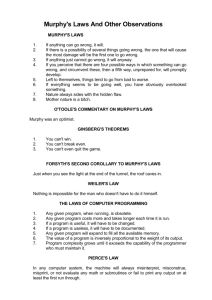Hypothesis 1 - Understanding Science

For the Instructor:
Pedagogical research indicates that students learn better if they are actively engaged. Two suspicious dogs and a shredded book provide a perfect combination for focusing on multiple aspects of the process of science and to do so with a bit of a chuckle. The slides have been developed so that you can ask for responses from your students at certain points of the investigation – either written or oral. The investigation reinforces the logic of a scientific approach, emphasizes the importance of posing and testing multiple hypotheses and provides a good opportunity for discussing the role of assumptions in science, avoiding bias, and the relevance of science in our everyday lives.
This slideshow is based on a blog written by Holly Dunsworth and is provided by Understanding Science (understandingscience.org) and the
University of California Museum of Paleontology. Feel free to use and modify this presentation for educational purposes.
Investigating a Crime Scene
Adapted from a blog written by Holly Dunsworth. All photos courtesy of Holly and her husband, Kevin.
As we walked in the door, one look at Murphy’s face, and we knew something was up.
Elroy was his usual cheery self, but Murphy definitely looked guilty.
Something was definitely up….
Meet Elroy and Murphy…
Murphy’s mopey expression was reminiscent of a previous mishap in 2005 – Murphy was the destroyer of goose down pillows.
So we reluctantly hunted around for evidence of destruction and quickly found it.
The book that Kevin just bought yesterday was naked, the punctured jacket strewn in the corner, the back cover was chewed, and the front cover had two puncture holes.
So who did it? Naturally it would be easy to expect Murphy due to the prior conviction, but did that make her the culprit in this caper? We decided to investigate.
Please note:
Though we decided to get to the bottom of this, we didn’t want to punish the guilty party. That would not be effective and we were not really mad. The book was still readable, and even if it weren’t, it’s just a book. We were just curious about who shreds magazines, sucks on dish towels, etc. when we are not home, and we hoped to someday figure out how to stop this behavior.
What did we observe? What is the potential evidence?
Who chewed up Kevin’s book?
We could list endless possibilities, but we can make some assumptions that will limit our scope.
What are the possible explanations?
• We assume that nothing supernatural is to blame for the maiming of the book.
No ghosts or werewolves attacked the book.
• The book did not bite itself.
• We exclude the possibility that an intruder broke into our house, terrorized one book on Kevin’s nightstand, touched nothing else, and left without leaving a trace of his/her presence.
• Since there were two live animals with sharp teeth in the house, we assume either of the two animals is responsible and not an intruding animal with sharp teeth from outside.
YOUR TURN:
Kevin and Holly came up with three alternative hypotheses to explain the puncture marks on Kevin’s book.
2.
3.
What are your ideas?
1.
OK – let’s check your ideas against theirs.
Hypothesis 1: We cannot say whether it was Elroy or Murphy who destroyed the book.
Hypothesis 2: Elroy did it.
Hypothesis 3: Murphy did it.
How can we test these ideas?
YOUR TURN:
How could you test each of the hypotheses? Here is a hint…
YOUR TURN:
So to test each hypothesis, we need to measure the distance between the upper and lower canines on both Elroy and Murphy and measure the distance between the puncture holes on the book.
Making the case:
Hypothesis 1: We cannot say whether it was Elroy or Murphy who destroyed the book.
Expectation: None (or all!) of the dog tooth measurements match the puncture hole measurement.
Hypothesis 2: Elroy did it.
Expectation: The distance between Elroy's upper or lower canines is the same as the distance between the puncture holes in the book.
Hypothesis 3: Murphy did it.
Expectation: The distance between Murphy's upper or lower canines is the same as the distance between the puncture holes in the book.
YOUR TURN:
Now that we know what to expect to test each of the hypotheses, let’s gather and interpret the data to see which of the hypotheses is supported and which are not…
Your conclusion?
Here is what Holly and Kevin decided:
Hypothesis 3 (Murphy did it) is supported (and Hypothesis 1 is not) because
Murphy's canine-to-canine distance matches the distance between the puncture holes.
Hypothesis 2 (Elroy did it) is not supported because canines that are further apart than 3.5 cm could not have made the holes and Elroy's are further apart.
Based on the distance between canines, we conclude that Murphy and not
Elroy attacked Kevin’s book.
Further evidence is needed to determine whether Murphy also chewed up the back cover. However, we predict that if that evidence were available it would implicate Murphy as well. But, because our study focused on canine-to-canine distance, we can only conclude that Murphy made the puncture holes on the front cover.
And there you have it! What would we do without the process of science??
….. And Elroy is thrilled to be exonerated!
Investigating a Crime Scene
With thanks to Holly Dunsworth for writing her blog in the first place and then allowing us to adapt the blog for this purpose. She also provided all of the wonderful photos.
Thanks also to Elroy…. And even to Murphy!
http://ecodevoevo.blogspot.com/2010/10/dog-eats-book-domesticapplication-of.html


